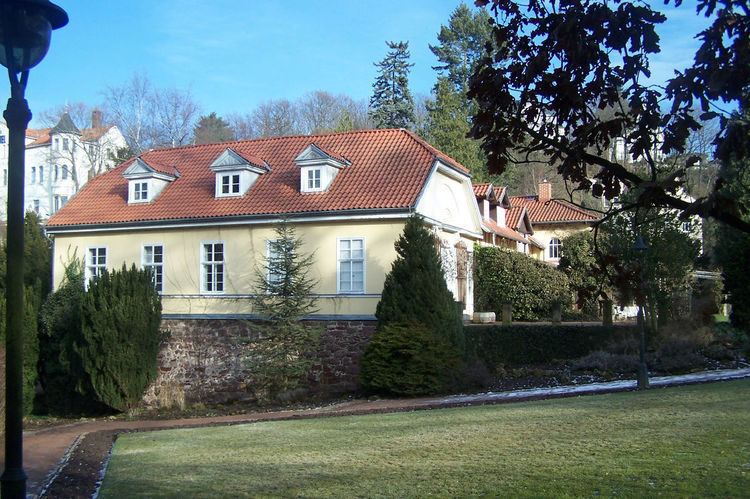 | ||
Eisenach Charterhouse (German: Kartause Eisenach) is a former charterhouse, or Carthusian monastery, in Eisenach in Thüringen, Germany, founded in 1378 and suppressed in 1525.
Contents
History
The charterhouse Domus Vallis Sanctae Elisabeth, dedicated to Saint Elizabeth of Hungary (by her marriage Landgravine of Thuringia), was established in 1378 with the support of Landgraves Frederick III and Balthasar and of William I, Margrave of Meissen. The first monks arrived in the years from 1378 to 1383 from Erfurt Charterhouse. The monastic premises were sited just outside the town of Eisenach, in front of the Frauentor ("women's gate") to the south of the town. In 1382 the Carthusian Chapter General officially accepted the new foundation into the order.
The charterhouse flourished in the 14th and 15th centuries. Prominent scholars of Scholasticism originated here, such as Johannes de Indagine (real name Johann Bremer von Hagen, 1415−1475), who was prior of Eisenach from 1454 to 1456, and later prior of Erfurt Charterhouse. His successor Heinrich Nemritz (prior 1457−1474), served from 1477 to 1482 as General Visitor of the Lower German province of the Carthusian Order.
The Reformation split the monks. In the early 1520s some had already become adherents of the teachings of Martin Luther.
Dissolution and later use
In the "Eisenacher Pfaffensturm" ("Eisenach Priest Storm") on 24 April 1525, the buildings were looted and badly damaged. The monks and nuns from all monastic houses in Eisenach were driven from the town. The charterhouse was dissolved and its premises were confiscated by the Elector John. The Elector John Frederick I had the secularised monastery repaired by 1537 and used it as a country house.
During the Thirty Years' War it was looted.
In 1694 Duke John George II of Saxe-Eisenach established an orphanage and a textile mill in the buildings. The garden was used as a ducal kitchen garden. Between 1717 and 1721 a new Zucht- und Waisenhaus ("Home for Upbringing and Orphans") was set up alongside a cloth manufactory. Around 1790 the court gardener Johann Georg Sckell successfully transformed it into a landscape garden. After the orphanage was closed in 1819, the buildings were put to use as a house of correction.
Today on the former monastery grounds is the charterhouse garden of Eisenach, which was given its present form from 1845 by Hermann Jäger (1815−1890).
Buildings
The gardener's house in the centre of the charterhouse garden with its Neoclassical "tearoom", contains the last remains of the monastery.
